All about ebru paints
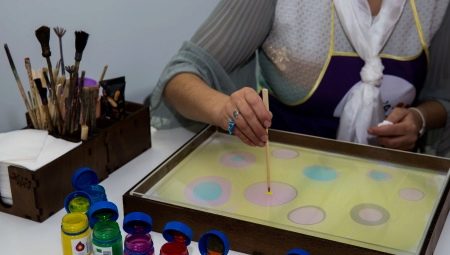
They do not sink in water and create amazing patterns on it. This is not even quite drawing, it is practically a performance available to everyone, regardless of their skills and level of painting. Children are especially fond of such paints, who perceive the process of creating an image as a trick, as a miracle. We are talking about ebru, a very popular art direction today.
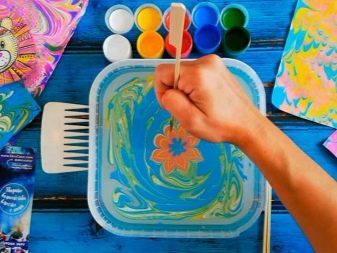
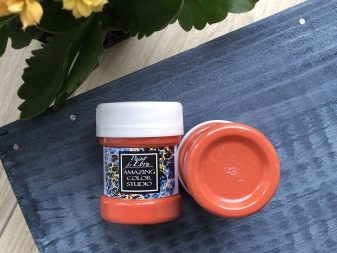
What colors are there?
Water is taken as a canvas in Ebru's drawing. Naturally, not the most common, but a special composition. Hevea extract is added to it, which makes the water more viscous, and colored drops will not sink and dissolve in it, but will create incredible patterns. But, in addition to special water, special paints are also required. You can buy them, or you can do it yourself.
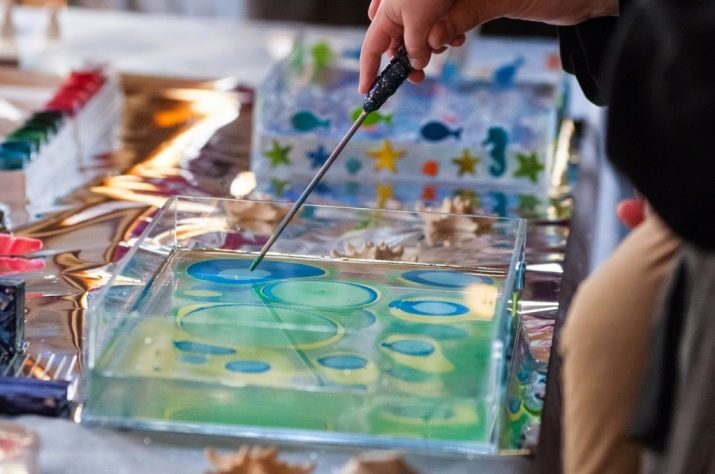
Original Ebru paints are made from bovine bile and minerals. A drawing with such paints will not have clear geometric outlines, everything is built on abstraction, free painting. Paints that are sold in special markets, in online stores are very liquid, in consistency they are close to water.
Thanks to this, they spread over the surface easily, forming patterns. There are paints that are ready for application, and there are those that are sold in a concentrated form, they need to be diluted.

All paints can be divided into three groups.
- Professional. They can be sold in pigments, this is the concentrate that still has to be diluted. Water and bile are poured into it, strictly in the proportions indicated in the instructions.
- Semi-professional. Paints are made in production, the quantity and proportions are taken into account there, that is, the author of future drawings cannot influence the composition.They are good for drawing abstraction, but for something more specific, professional paints are better suited.
- Homemade. Yes, the process of creating them can be considered relatively time-consuming, but this is their plus too.
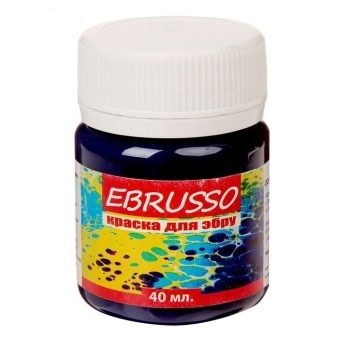

For example, for drawing with children, creating such paints at home is ideal. There are several recipes for creating paints at home.
Ebru painting kits can be sold ready-made: they will contain everything to start a creative experiment. And paints too.

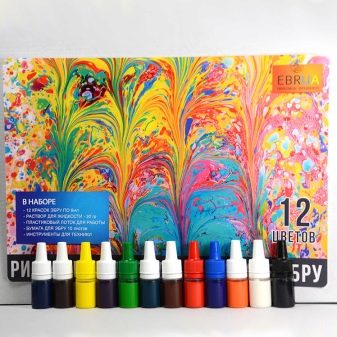
Selection Tips
If you have to not just paint for your pleasure, but create a work that, for example, will decorate the interior or will be used as handmade for subsequent implementation, you need to take professional paints. Their main advantage is that they "obey" their master, they are more malleable and they have more opportunities. With their help, you can draw not only abstractions, but also other pictures.
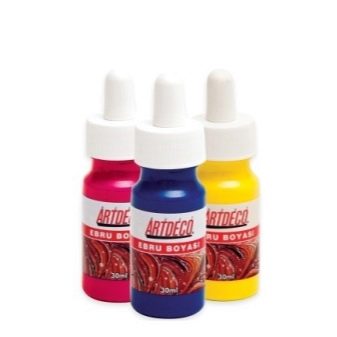
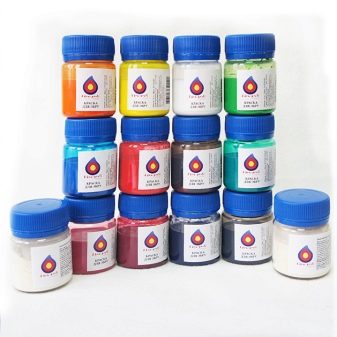
At the same time, mixing them is not easy, the term of use is limited. Many people get bored with such paints, because there is a lot of fuss with them and it will not be possible to use the mixed composition for a long time. As a result, when choosing professional paints, you need to be prepared for the fact that:
- kneading them may take an extra hour or two (without exaggeration);
- they will help to arrange a show of water animation (that is, you can earn money on the ability to draw ebra);
- a lot of paint can be diluted from one jar, the composition is quite economical, however, not everyone manages to get along with it;
- the price for one jar is on average 1000 rubles, and this is only one color.
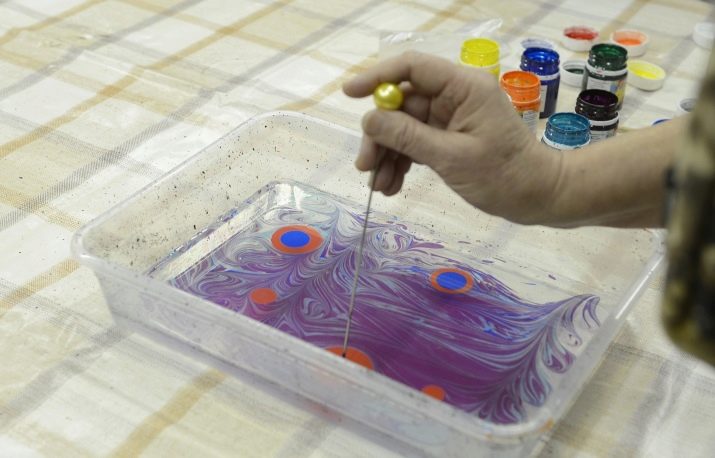
Therefore, most of the buyers prefer semi-professional formulations. It's easier with them: you don't need to breed, a jar costs about 200 rubles, it's easier to work with them.
True, a real water show cannot be arranged, and creative ideas will be limited by the possibilities of paint. But if you just want to try, draw with your child, or keep yourself busy with something new, you can organize a small home laboratory. And do everything yourself.
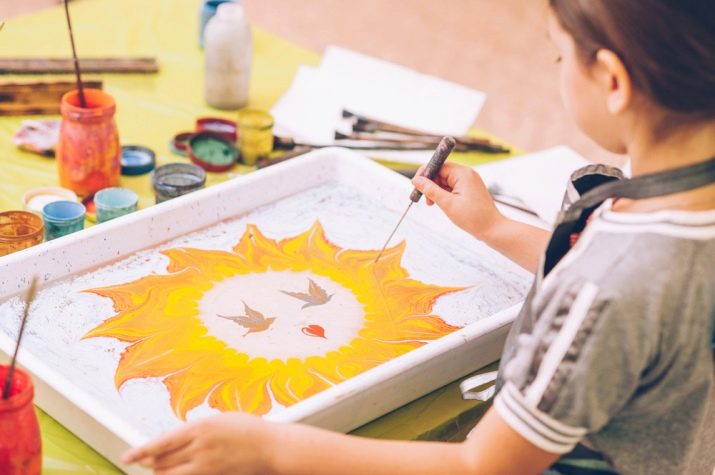
How to do it yourself?
You can use ordinary acrylic paints, which are slightly diluted with water. But then the liquid-canvas will be special: glycerin is added to the water, but so that the solution does not thicken too much. Also, instead of the base, you can take another option - prepare water, add starch there, cook jelly, which is also not very thick. And acrylic paints, slightly diluted with water, will also be added to this base.
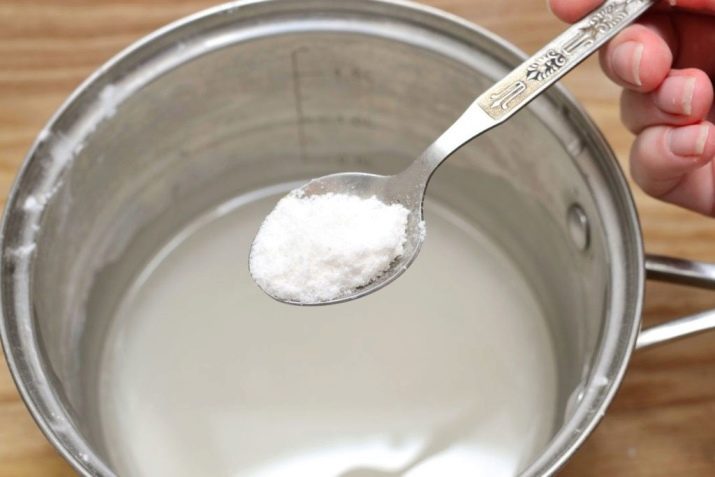
For children's creative experiments, those same paints for ebru can be replaced with simple gouache. It will also have to be diluted with water. It is clear that the gouache will dissolve in water, therefore, to make the canvas, you will need to take high-fat milk. In order for the drawing that the child will make to move along this canvas of milk, you need to add a couple of drops of dishwashing liquid there.
Best of all, natural ebru paints will stick on the water, and each color reveals itself in its own way, even the opening time will be different. Well, and ordinary paints, which at home adapt to the ebra, behave more predictably, do not show great miracles.
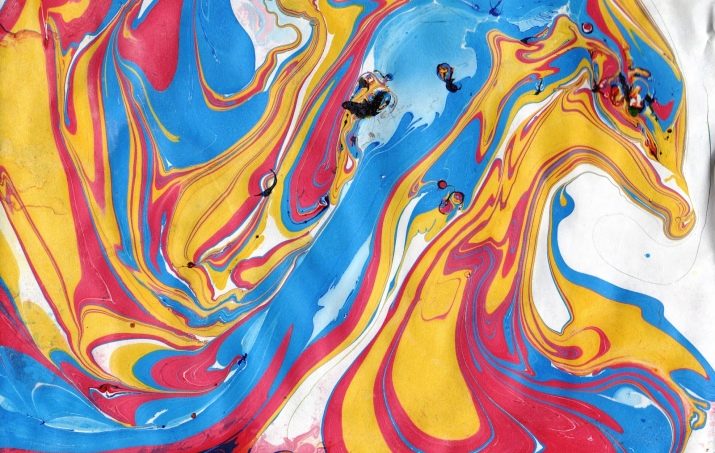
But if you want to make cool natural paints, the following ingredients are used:
- white lead paint;
- red cabbage (juice) for red;
- oven soot for black;
- natural arsenic for yellow;
- natural blue (not all, special grade) for blue;
- blue + yellow for green.
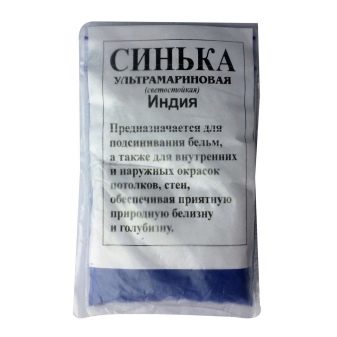

And in order for the paints to become ebru, bovine bile is added to them - the paint with its help will not "fall through" and will move.
How to use it correctly?
The standard kits (as well as the ebru drawing guidelines) mention 9 basic colors, from red to black. The set also includes a pallet, usually made of galvanized iron. There will also be a solution of Kitre, that is, water for painting and bile, which will allow the paint to open on the water.You can take your own brushes, you will also need an awl (most likely several - thin, medium and thick). To make the drawing more graceful, you need a comb. It remains to add an eyedropper, napkins (clean the awl), office paper.
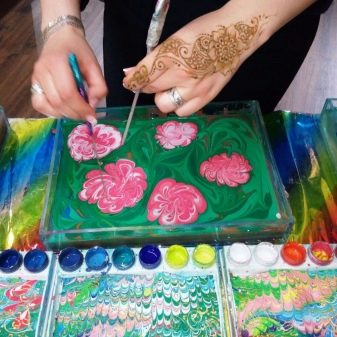
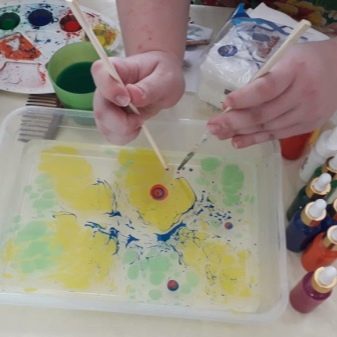
How to use paints.
- Before work, you need to check how the colors will unfold on the canvas. An awl is dipped into the paint, a drop of paint is transferred to the water. If the paint moves well, opens quickly, then everything is ready for work. If it sinks quickly, it is diluted with bile.
- Each painting can be sprinkled with 6 colors. If the colors are unnatural - no more than three. Natural dyes hold better and last longer. They hardly go under water, do not sink. But you can draw with them only for 2 hours, then they are unsuitable for work.
- Each paint behaves differently on water. Blue and violet colors, for example, are slow to unfold. Red is considered the most capricious color, it is very difficult to reveal. But this is good - red will be dense, concentrated, therefore expressive flower buds are often painted with it. Then green follows him in speed, then blue.
- Blue is often used for the background, it is ideal. But the color needs to be adjusted so that the others reveal well on it.
- Hold the awl with the collected paint only vertically. You cannot create a drawing at an angle. Only vertical fixation allows you to create a circle on the canvas. The awl, by the way, must always be kept dry, it must be wiped with a napkin after each action.
- The ebru brush is used exclusively for spraying. And any brushes will not work (for example, a squirrel will not work). But using a bamboo branch instead of a brush is a good solution. With your right hand, you need to hold the brush by the handle, splashing color over the surface, slightly hitting the central part of the tool on the palm of your left hand. Splashes are in the direction of the drawing, from left to right.
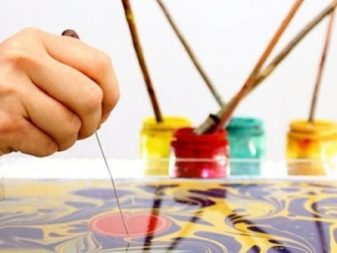
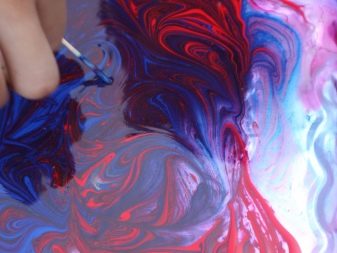
You can admire the resulting image not only in the water. It is really possible to transfer the print of the image to the sheet and then make it an independent picture, part of a panel or a drawing, which will, possibly, become a print of a scarf and not only.



